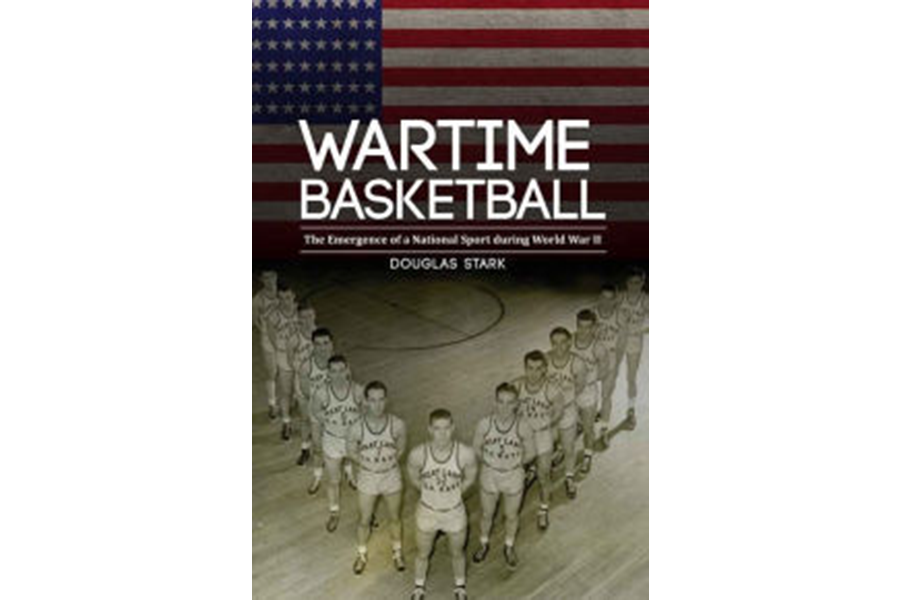Before World War II, basketball playing styles often varied by region, but the war tended to knit these styles together as pro and amateur teams consolidated with so many players in military service. Then, too, military base teams increasingly mixed together an infusion of top players, giving rise to such powerhouse squads as that at the Great Lakes Naval Training Station in Illinois.
Douglas Stark, who ironically is the museum director of the International Tennis Hall of Fame in Newport, R.I., chronicles the wartime evolution of basketball that set the stage for its rising peacetime popularity and eventual emergence of the National Basketball Association. Before that, however, the World Professional Basketball Tournament, begun in 1939, brought together professional, amateur, barnstorming, and independent teams in which all-black squads competed against all-white teams in a “world series of basketball.”
Here’s an excerpt from Wartime Basketball:
“There was only one game scheduled for the National Basketball League on Friday, December 11, 1942. It pitted the Chicago Studebakers, new to the league, against the Toledo Jim White Chevrolets, who were entering their second season of league play. For most followers of professional basketball, this game would take a back seat to the star-studded matchup[s] featuring the two Wisconsin teams who were playing exhibition matches in Milwaukee. Normally, an exhibition match would not generate this much interest, especially against league play, but in this case the games did not disappoint. The double-header featured the Oshkosh All-Stars against the world famous Harlem Globetrotters, while the second tilt showcased the Sheboygan Red Skins paired against the New York Renaissance (Rens). The Globetrotters and the Rens were two of the best basketball teams in the country and their appearance always generated great interest and overflow crowds. One could be forgiven if all the basketball-watching focus centered north in Milwaukee and not in Chicago.”







